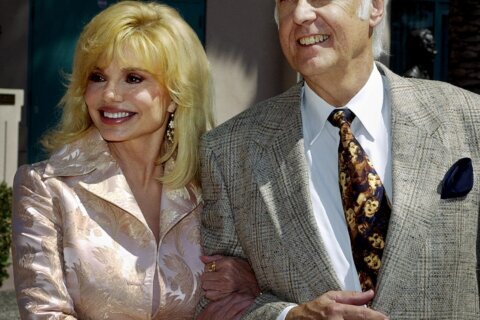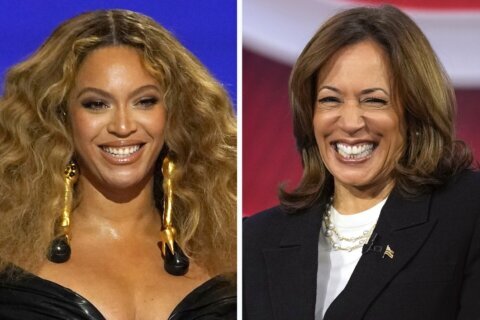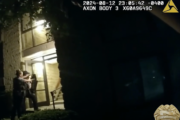WASHINGTON — They say “Virginia is for Lovers,” but that wasn’t always true.
Look no further than the Virginia Film Festival, which kicks off Thursday with the biopic “Loving.”
Nominated for the Palme d’Or at Cannes, the film has become a Virginia hometown hero highlighting the historic Supreme Court case Loving v. Virginia, which legalized interracial marriage back in 1967.
Set in 1958, the film follows Caucasian, blue-collar brick layer Richard Loving (Joel Edgerton), who marries an African-American rural Virginian named Mildred (Ruth Negga). They yearn to build a life together, but are subsequently jailed and exiled for “violating” a state ban on interracial marriage.
“Unfortunately, I think they’re as relevant today as they were in 1958, when they were arrested, and in 1967, when the Supreme Court decision came down,” writer/director Jeff Nichols told WTOP.
While Stanley Kramer’s “Guess Who’s Coming to Dinner” (1967) dealt with interracial marriage in real time with Sidney Poitier, “Loving” is technically a period piece reflecting on history — but that doesn’t make it any less relevant to current social issues, be it racial or marriage equality in 2016.
“Sadly, I think this is happening in real time as well,” Nichols said. “Issues of equality are definitely not something we’ve put to bed yet. In fact, I don’t think we ever will. I think these are issues that every generation has to define for themselves. We’re in the middle of a desperate search for a definition of equality for this generation. Richard and Mildred show us the humanity at the center of that quest.”
It’s the first narrative theatrical film to explore the true story, following the made-for-TV movie “Mr. and Mrs. Loving” (1996) starring Timothy Hutton and Lela Rochon. However, it was Nancy Buirski’s more recent documentary “The Loving Story” (2011) that provided the blueprint for Nichols.
“[That] really became the foundation for all of us … to strive for a very authentic and accurate portrayal,” Edgerton told WTOP. “The documentary became a guide for every department: the designers, the hair and makeup department. Then for us as actors, it was the perfect guide for us to step into the shoes of the characters. There’s so much archival footage of Richard and Mildred.”
The filmmakers also pulled from poignant Life magazine photos taken by photographer Grey Villet.
“The photographs captured a little bit more of the intimate essence of the two of them than the documentary crew,” Edgerton said. “I think they were two such shy people.”
The photographer is played by Michael Shannon, who’s worked on all five of Nichols’ films: “Shotgun Stories” (2007), “Take Shelter” (2011), “Mud” (2012), “Midnight Special” (2016) and now “Loving.”
If you haven’t been paying attention to this body of work, you better start quick. Nichols has quietly become one of our most reliable filmmakers, making a series of graceful, nuanced, understated gems.
In “Loving,” the film builds to the titular court case, but Nichols chooses to avoid a giant, sentimental courtroom climax like “To Kill a Mockingbird” (1962) or “Philadelphia” (1993). Just as Richard and Mildred chose not to attend the trial, Nichols’ camera barely shows us the inside of the courtroom.
This gutsy approach may send some mainstream audiences out of the theater dramatically unfulfilled — certainly, the idea of passive protagonists during the climax is ill-advised for novice screenwriters —but there’s something graceful, even noble to this “less is more” approach in the hands of a pro like Nichols, telling this particular story, with these particular characters, who often avoided the limelight.
“I think as an audience, we’ve been conditioned to receive stories a certain way,” Nichols said. “In this particular instance, that way did not reflect Richard and Mildred’s experience. … There are human beings at the center of all this stuff. Marriage equality, racial equality, these are big social debates, political debates, religious debates and none of it has to do with the people at the center of them.”
Instead of the courtroom, Nichols cuts to the Loving family quietly eating at the dinner table.
“It made sense to make a film that focused on … the day-to-day life,” Nichols said. “The beautiful children they made together, the beautiful life they made together in an atmosphere where society around them told them it was wrong. That seemed to be the potent advice this story was giving us.”
This matter-of-fact theme exists on all levels, from script to performance. As a lawyer asks, “Is there anything you want me to tell the justices?” Edgerton simply responds, “Tell the judge I love my wife.”
“As an actor, you have a radar for things that are not authentic,” Edgerton said. “It’s also called the bull**** meter. I have one of those finely tuned. When I go against it, I feel very awkward on set when I’m asked to do things that don’t seem real. … I’ve been handed scripts where I’m asked to say things that I just know in my bones would not really, truly have been said by a human being ever in the history of the planet Earth. But you push through because that’s why they pay us the medium bucks.”
Edgerton (Tom Buchanan in “The Great Gatsby”) says the “Loving” dialogue is admirably naturalistic.
“This was just a very feet-on-the-ground, roots-in-the-ground, honest portrayal of two people — and that’s one of the things that was very attractive to me,” Edgerton said. “When you’re given a job to just be a real person saying real things that ring true … it just felt real, it felt authentic, it felt honest.”
And so, as the legal drama unfolds around them and the social justice warriors rage toward history, you’ll find Edgerton’s Richard quietly working around the house, a handyman taking care of business.
“It’s important to remember … the real-life stuff keeps going on while people are dealing with the bigger stuff, in this case, being oppressed by the entire system and being checkmated by the law,” Edgerton said. “It was important to still invite the audience inside their home, to give them an empathetic journey with them, to get to know the people at the center of these big issues.”
Edgerton admits he had to learn a lot of the handy work he does on screen.
“I used to know more of my way around old cars, but I did go off and learn a bit of brick laying,” he said. “It really informed a lot about Richard and why he walked and held himself the way he did.”
Time and again, Nichols returns to the symbolic familiar image of Edgerton laying bricks.
“The metaphor is pretty heavy,” Nichols said. “This man was trying to build a home for his family and was robbed of the opportunity. … We didn’t make it up for metaphor sake. Richard was going to work every day. … These were not wealthy people, these were working people. Their life never stopped.”
Neither does a nation’s work, built brick by brick, one on top of two, two on top of three.
Listen to the full conversation with “Loving” director Jeff Nichols and actor Joel Edgerton below:









